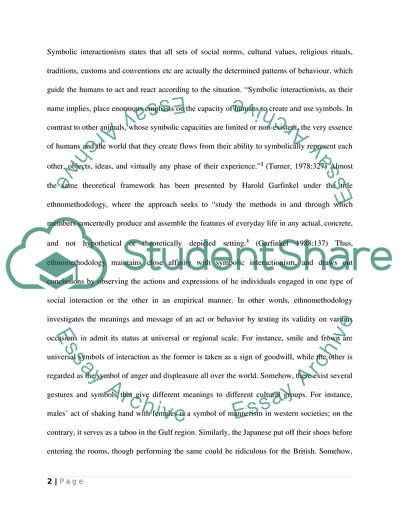Cite this document
(“Social Interaction in the Light of Symbolic Interactionism Essay”, n.d.)
Retrieved from https://studentshare.org/sociology/1583972-analyse-an-everyday-instance-of-social-interaction-using-two-of-the-approaches-discussed-in-this-unit-and-on-the-basis-of-your-application-and-critical-assessment
Retrieved from https://studentshare.org/sociology/1583972-analyse-an-everyday-instance-of-social-interaction-using-two-of-the-approaches-discussed-in-this-unit-and-on-the-basis-of-your-application-and-critical-assessment
(Social Interaction in the Light of Symbolic Interactionism Essay)
https://studentshare.org/sociology/1583972-analyse-an-everyday-instance-of-social-interaction-using-two-of-the-approaches-discussed-in-this-unit-and-on-the-basis-of-your-application-and-critical-assessment.
https://studentshare.org/sociology/1583972-analyse-an-everyday-instance-of-social-interaction-using-two-of-the-approaches-discussed-in-this-unit-and-on-the-basis-of-your-application-and-critical-assessment.
“Social Interaction in the Light of Symbolic Interactionism Essay”, n.d. https://studentshare.org/sociology/1583972-analyse-an-everyday-instance-of-social-interaction-using-two-of-the-approaches-discussed-in-this-unit-and-on-the-basis-of-your-application-and-critical-assessment.


